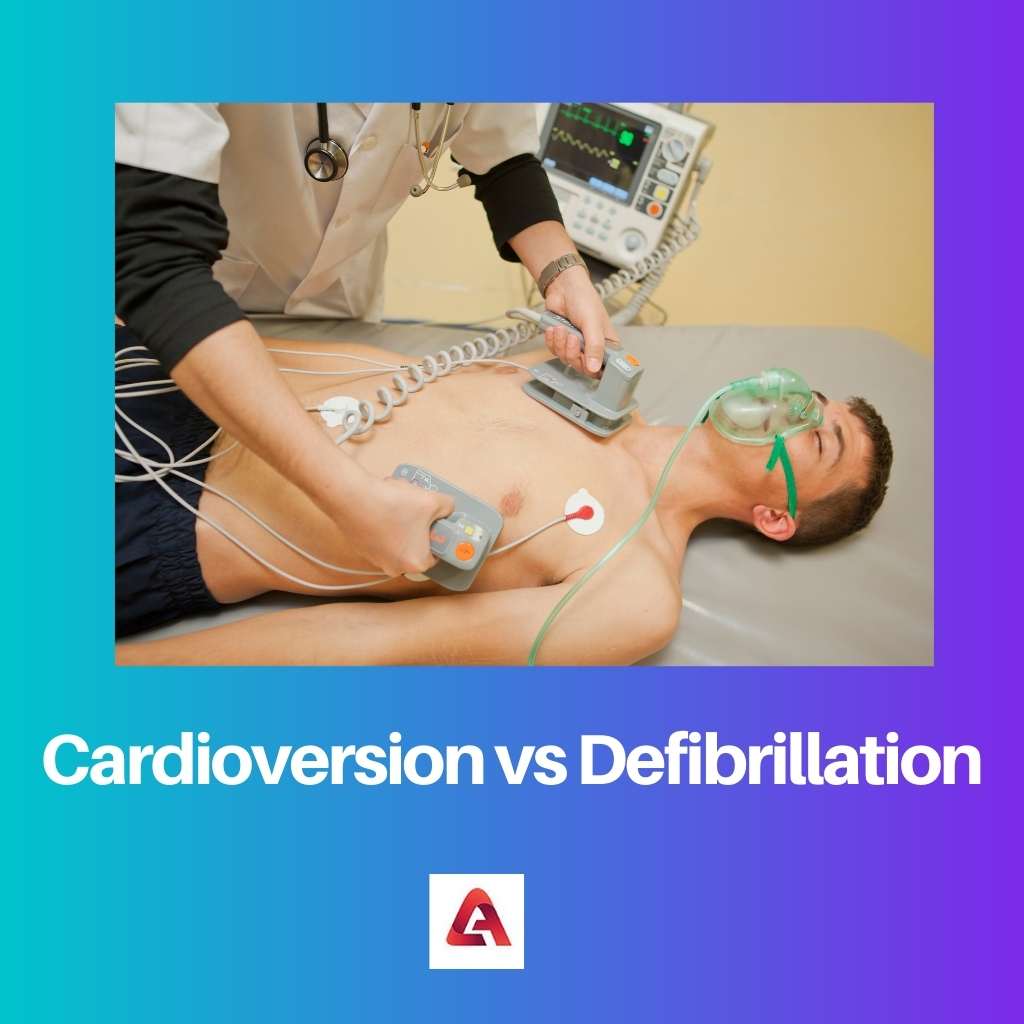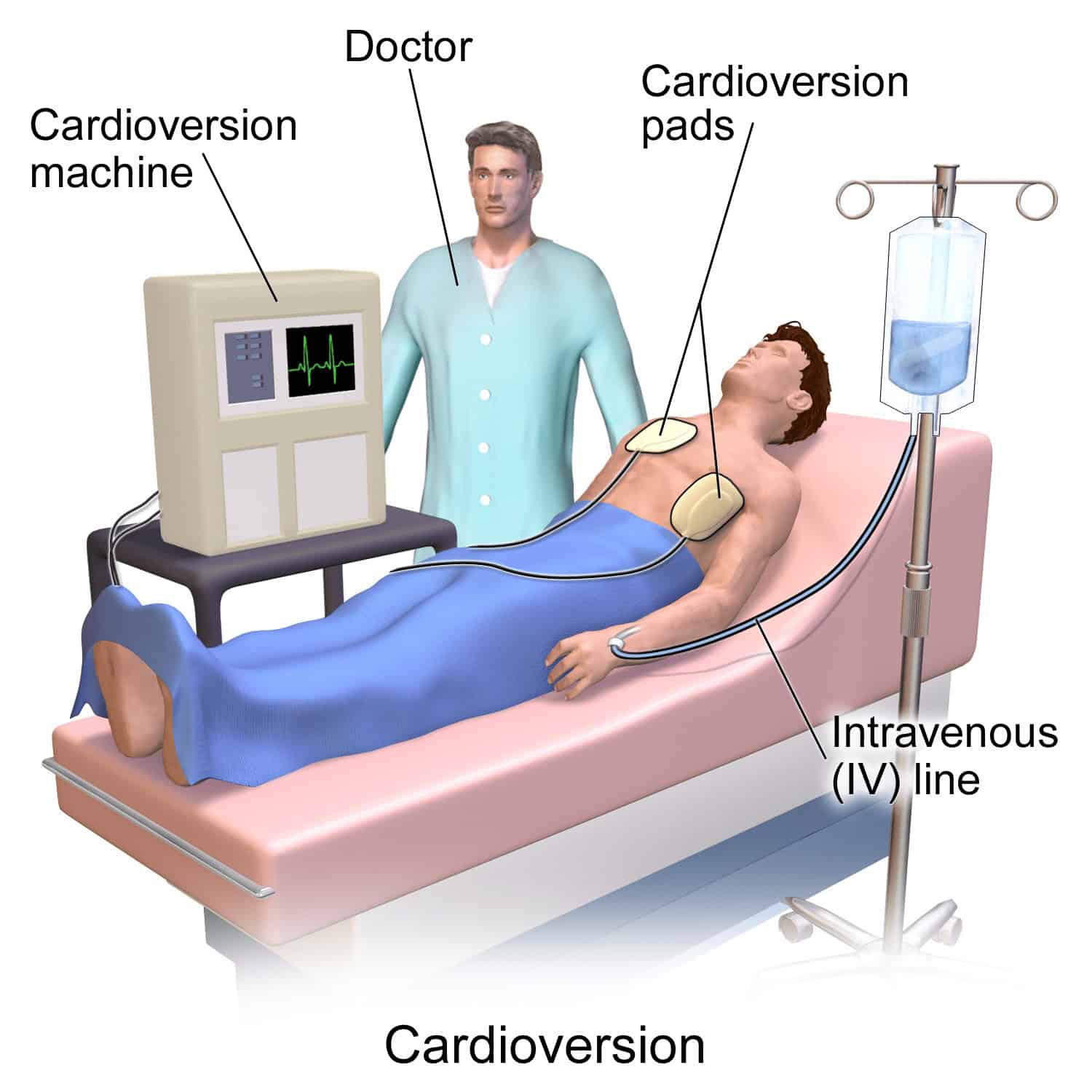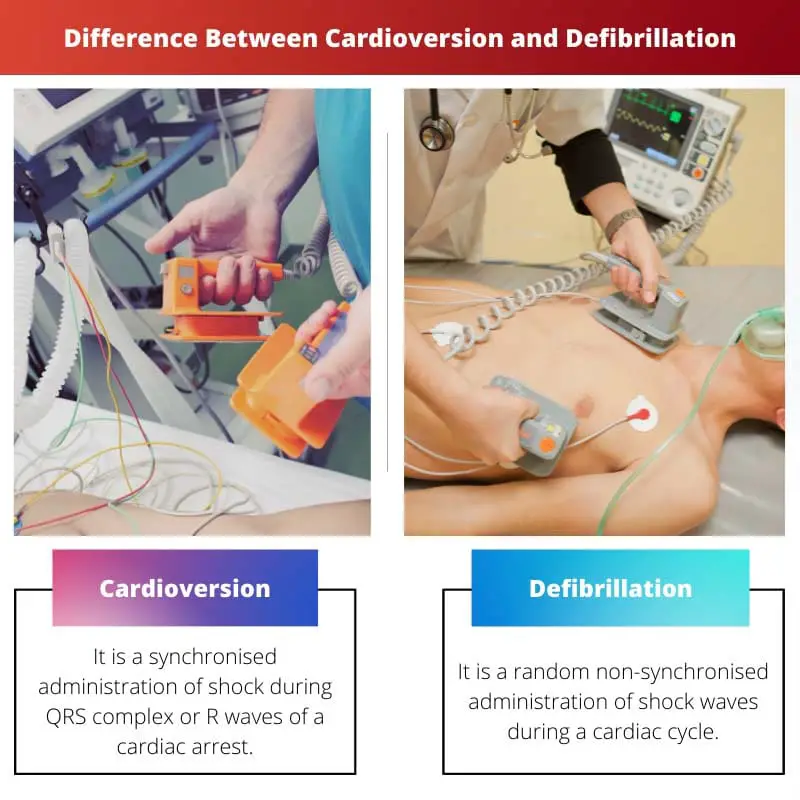Cardioversion and defibrillation are two terms that are closely related to the heart. These are used when we talk about issues related to the heart, like irregular heartbeats or rhythms, which are also known as arrhythmias.
The right knowledge of cardioversion and defibrillation can help save many people’s lives.
Key Takeaways
- Cardioversion uses synchronized, low-energy electrical shocks to treat abnormal heart rhythms.
- Defibrillation delivers unsynchronized, high-energy electrical shocks to address life-threatening arrhythmias.
- Both methods aim to restore normal heart function but differ in energy levels, timing, and target arrhythmias.
Cardioversion vs Defibrillation
The difference between Cardioversion and Defibrillation is that cardioversion is administered synchronised shocks during waves or QRS complexes of a cardiac arrest. In contrast, defibrillation is a random non-synchronised administration of shock waves during a cardiac cycle. The definition of these two might sound similar, but when we observe closely and understand that they are completely different.

Cardioversion deals with the conversion of arrhythmia to sinus rhythm. There are a lot of related procedures to cardioversion, and everything coming under this category helps bring back sinus rhythm.
Cardioversion’s most important aspect is that it needs to be synchronised, not just any random wave.
Defibrillation is a random and non-synchronised administration of shocks that needs to be given during a cardiac cycle.
Some indications of defibrillation are ventricular fibrillation, pulseless ventricular tachycardia, and cardiac arrest due to ventricular fibrillation. There are many more things by which the distinction between Cardioversion and Defibrillation can be seen clearly.
Comparison Table
| Parameters of Comparison | Cardioversion | Defibrillation |
|---|---|---|
| About | Indications for Cardioversion include Atrial Fibrillation, Ventricular tachycardia with a pulse, and and Supravena tachycardia. | It is a random non-synchronised administration of shock waves during a cardiac cycle. |
| Indications | Indications for Cardioversion include Atrial Fibrillation, Ventricular tachycardia with a pulse, and Supravena tachycardia. | Indications for Defibrillation include Ventricular Fibrillation, Pulseless Ventricular Tachycardia, and cardiac arrest due to or resulting in VF. |
| Anaesthesia | Anaesthesia is used in cardioversion almost all the time. | It is advised to perform Defibrillation under sedation. |
| Energy | Energy joules are low. | Energy Joules are high. |
| Escalated Energy | Escalated for next shock (100J – 200J – 300J – 360J) | No energy escalation for the next shock. |
What is Cardioversion?
Cardioversion is the procedure that emphasises synchronised administration of shock given during are waves of a cardiac arrest or the QRS complex of a cardiac arrest.
It can be any procedure that helps convert arrhythmia, an irregular heart rhythm, back to a regular rhythm, that is, sinus rhythm.
There are two types of cardioversions – chemical cardioversion and electrical cardioversion.
Initially, the patient is treated with chemical cardioversion, and if it fails to provide any help, it is better to move on to electric cardioversion to safeguard the person.
There are many scenarios in which cardioversion is required. Some of these are common, like chest pain, pulmonary oedema, syncope and hypertension.
There are also many situations in which this technique of cardioversion is less frequently used, like atrial fibrillation. This is very important to restore the heart rhythm to the sinus rhythm.
The risk of thromboembolic disease is associated with cardioversion of atrial fibrillation, so it is recommended to undergo anticoagulation at least four weeks after or three weeks before the procedure.
Anaesthesia is given to the patient undergoing cardioversion almost all the time. Energy joules also escalated after every shock.

What is Defibrillation?
Defibrillation is the random and non-synchronised administration of shocks during a cardiac cycle.
It is not a very ancient procedure and was first introduced as alternating current Defibrillation to treat ventricular fibrillation in humans in 1956. After six years, in 1962, even direct current Defibrillation was discovered.
Indications for defibrillation are ventricular fibrillation, pulseless ventricular tachycardia, and cardiac arrest due to or resulting in ventricular fibrillation.
Defibrillation must be performed in conjunction with sedative agents. Defibrillators have the feature of delivering energy in different waveforms that are characterised as monophasic and biphasic.
Monophasic defibrillation is known to deliver charge in just one direction. In contrast, biphasic defibrillation can deliver in one direction for the first half of the shock and then in the opposite electrical direction for the second half.
Different portable relatives can be worn as a guest and monitor the heart 24/7.
The market is full of varieties when you buy a defibrillator. They have advantages and disadvantages, so it is important to undergo quality research before choosing the right defibrillator.
Some commonly available defibrillators are Philips Heartstart onsite, physio-control lifespan cr2, heart sign samaritan 350p, cardiac Science G3 AED fully automatic, and ZOLL AED plus fully automatic.

Main Differences Between Cardioversion and Defibrillation
- Cardioversion is an administered synchronised shock given during QR complex or R waves of a cardiac arrest. In contrast, Defibrillation is a random and non-synchronised administration of shock waves during a cardiac cycle.
- Anaesthesia is used almost always in Cardioversion unless there is a special case, while defibrillation is an emergent manoeuvre, so sedation is only provided when utterly necessary.
- Atrial Fibrillation, Supervena Tachycardia, and Ventricular Tachycardia with a pulse are common indications of Cardioversion. Some common indications for Defibrillation include Ventricular tachycardia without a pulse, Cardiac arrest due to VF or resulting in VF.
- Energy Joules are low in cardioversion, whereas Energy Joules are high in Defibrillation.
- Energy is escalated for every next shock in cardioversion, while it is not escalated in the case of Defibrillation.

- https://www.sciencedirect.com/science/article/pii/0002914988909654
- https://www.sciencedirect.com/science/article/pii/0002914987903523

This article presents a clear and comprehensive comparison between cardioversion and defibrillation. It is very educational.
The clear distinction between the two procedures is very useful. It is important to have this well-detailed information.
This piece provides a thorough explanation of the important medical procedures. It is highly educative and well-structured.
The article is very informative and is helpful in understanding the differences between cardioversion and defibrillation.
The arguments presented are really thorough and enlightening. It’s good to have such detailed knowledge about these medical procedures.
The post seems to provide a comprehensive overview of a very important medical area. It is great to have such details.